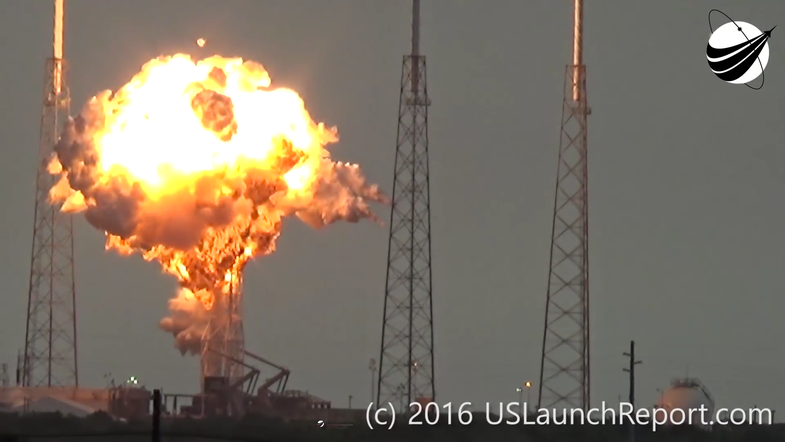Could SpaceX’s Falcon 9 Really Launch Again By November?
The company is hoping recovery from launch pad explosion will happen much faster this time around


SpaceX is grounded after a Falcon 9 rocket caught fire on the launch pad on September 1. Yet despite the fact that CEO Elon Musk has called the explosion “the most difficult and complex failure we have ever had in 14 years,” SpaceX president Gwynne Shotwell expects the company might resume launching rockets in November.
That seems optimistic, considering the cause of the explosion remains unknown. Musk put out a call for help on Twitter last week, to see if extra photos and videos of the disaster will yield any new clues.
The last SpaceX disaster occurred in June 2015, when a Falcon 9 blew up a few minutes after launch. The company ID’d the problem (a faulty strut) by July 2015, but still the Falcon 9 didn’t get off the ground again until December 2015, resulting in 5.5 months of downtime.
Tory Bruno, the CEO of United Launch Alliance, told Reuters that it usually takes 9 to 12 months to recover from a space launch accident. However, SpaceX does a lot of things differently from ULA (such as launching at a much cheaper price), so it wouldn’t be terribly surprising if they can return to the launch pad sooner than a traditional rocket company would.
And an industry source told Popular Science that part of the reason SpaceX was down for so long after the June 2015 accident was because they were prepping a souped-up new version of the Falcon 9. With no new launch vehicle, the recovery from the September 1 mishap could happen a lot faster this time around.
But SpaceX’s return to flight depends on how long it takes to figure out what went wrong and then fix it. Depending on the complexity of the cause, that could take some time, says Paulo Lozano, a researcher at MIT’s Space Propulsion Lab.
“If a turbo pump in the rocket engine fails, it could take months or years to recover from a failure like that. It’s not the same as something simple like a leaking valve. The timeline is going to depend on the complexity of this particular case.”
Then, once you have a solution, Lozano says, “you have to do testing, evaluation, modeling, and at the end you have to prove to yourself and the world that this is not going to happen again.”